グローバルリーダー協会の齋藤信幸です。
ディーラーや代理店の部品在庫をどう適正化するか、自動車業界に限らず、どの業界にも共通の問題ですね。
さて、Ronさんはどうマネージしたのでしょうか。
PARTS DEPARTMENT
The parts department buys parts from the manufacturer and sells to the public. The real expertise of this department is buying parts for future demand, usually 3-6 months in the future.
最大の顧客は社内の修理サービス部門
The biggest customer of the parts department is the service department which uses the parts when repairing/maintaining vehicles. So, quick deliveries to the service department are important.
一般客にも販売
The parts department also sells over the counter when customers come in. Therefore, this business is very similar to your grocery store. There are impulse purchases for accessories along with repair parts and maintenance parts.
他の修理工場やパーツ屋にも販売
There is also outside sales to outside repair shops and other parts stores. In this case, good inventory and quick deliveries are important.
どうパーツの需要を予測するか
To determine future demand, you have to look at the type of part. There are regular maintenance parts (oil, brake shoes, filters, etc.). These parts are in most demand during the warranty period.
There are wearing parts (engine gaskets and oil seals, piston rings, etc.). The demand for these parts start after the vehicle is 3-5 years old. Before that, they should not be stocked in a dealership but ordered on an emergency basis.
Options are usually in demand when a vehicle is new. From then on demand declines.
Body and “crash parts” are the hardest to forecast, as you never know when an accident will occur, but the demand usually declines with the age of the vehicle, as the appearance becomes less important.
在庫回転率は重要
In terms of stocking inventory, turnover is always important. Simply, how many times is the average inventory sold per year? Also, there are “turn turns” looking at the number of times stocked only are sold per year.
Dead stock – Which parts have not been sold in one year? These should be watched and gotten rid of as soon as possible.
Regarding ordering parts, there are three main types - emergency orders, interim orders, regularly scheduled orders. Emergency orders are for items you don’t want to stock, as the demand is not great enough and forecasting is very difficult. Finding a way to get it quickly is most important. Interim orders are to replace stock you ran out of and have to stock-up before the regular order. Scheduled orders are the best and cheapest way to get parts. Usually this is done monthly.
Armed with all the knowledge I learned from this seminar, I took it and applied to the cutting tool industry, as my customers have these exact same problems. I started a “safety stock” system so my customers could get items quickly, if they have urgent, not forecasted demand.
***************************************************************************************
齋藤信幸の生産財の営業はここ。
齋藤信幸のロングステイはここ。
***************************************************************************************
ディーラーや代理店の部品在庫をどう適正化するか、自動車業界に限らず、どの業界にも共通の問題ですね。
さて、Ronさんはどうマネージしたのでしょうか。
PARTS DEPARTMENT
The parts department buys parts from the manufacturer and sells to the public. The real expertise of this department is buying parts for future demand, usually 3-6 months in the future.
最大の顧客は社内の修理サービス部門
The biggest customer of the parts department is the service department which uses the parts when repairing/maintaining vehicles. So, quick deliveries to the service department are important.
一般客にも販売
The parts department also sells over the counter when customers come in. Therefore, this business is very similar to your grocery store. There are impulse purchases for accessories along with repair parts and maintenance parts.
他の修理工場やパーツ屋にも販売
There is also outside sales to outside repair shops and other parts stores. In this case, good inventory and quick deliveries are important.
どうパーツの需要を予測するか
To determine future demand, you have to look at the type of part. There are regular maintenance parts (oil, brake shoes, filters, etc.). These parts are in most demand during the warranty period.
There are wearing parts (engine gaskets and oil seals, piston rings, etc.). The demand for these parts start after the vehicle is 3-5 years old. Before that, they should not be stocked in a dealership but ordered on an emergency basis.
Options are usually in demand when a vehicle is new. From then on demand declines.
Body and “crash parts” are the hardest to forecast, as you never know when an accident will occur, but the demand usually declines with the age of the vehicle, as the appearance becomes less important.
在庫回転率は重要
In terms of stocking inventory, turnover is always important. Simply, how many times is the average inventory sold per year? Also, there are “turn turns” looking at the number of times stocked only are sold per year.
Dead stock – Which parts have not been sold in one year? These should be watched and gotten rid of as soon as possible.
Regarding ordering parts, there are three main types - emergency orders, interim orders, regularly scheduled orders. Emergency orders are for items you don’t want to stock, as the demand is not great enough and forecasting is very difficult. Finding a way to get it quickly is most important. Interim orders are to replace stock you ran out of and have to stock-up before the regular order. Scheduled orders are the best and cheapest way to get parts. Usually this is done monthly.
Armed with all the knowledge I learned from this seminar, I took it and applied to the cutting tool industry, as my customers have these exact same problems. I started a “safety stock” system so my customers could get items quickly, if they have urgent, not forecasted demand.
***************************************************************************************
齋藤信幸の生産財の営業はここ。
齋藤信幸のロングステイはここ。
***************************************************************************************















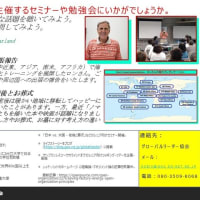


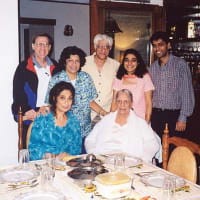
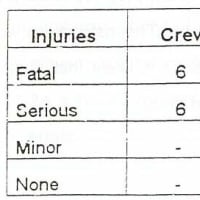
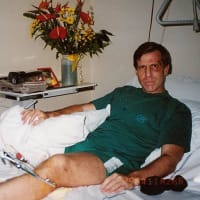
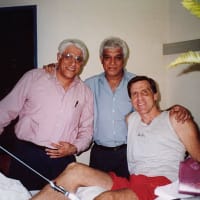






※コメント投稿者のブログIDはブログ作成者のみに通知されます